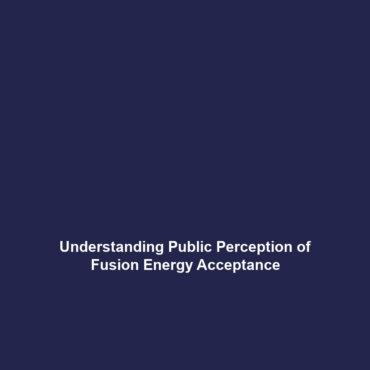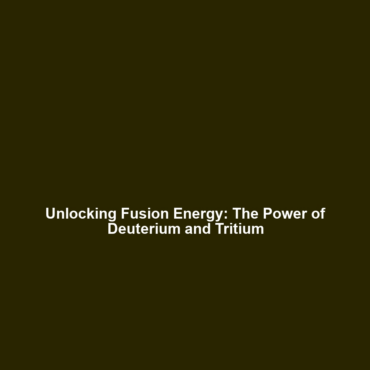Reducing Costs: Innovations in Reactor Design, Material Science, and Energy Efficiency in Fusion Energy
Introduction
In the quest for sustainable and renewable energy sources, fusion energy stands at the forefront, promising a clean and virtually limitless power supply. However, making fusion energy economically viable remains a critical challenge. Innovations in reactor design, advancements in material science, and enhancements in energy efficiency are key to reducing costs associated with fusion technology. This article delves into these innovations, exploring their significance in the broader context of fusion energy and the future of global energy solutions.
Key Concepts
Innovative Reactor Designs
One of the most significant areas of research is the development of advanced reactor designs. These include:
- Tokamak Reactors: Magnetic confinement systems that use magnetic fields to contain hot plasma.
- Spheromaks: A simplified configuration that seeks to reduce complexity and cost.
- Stellarators: Devices designed to improve stability and performance.
Material Science Advancements
Material science plays a pivotal role in enhancing the durability and efficiency of fusion reactors. Research is underway to develop:
- High-Temperature Superconductors: Materials that can operate at higher temperatures, reducing energy losses.
- Advanced Structural Materials: New alloys and composites that withstand extreme conditions.
Energy Efficiency Improvements
Maximizing energy efficiency is essential for reducing operational costs. Innovations include:
- Heat Extraction Technologies: Methods to efficiently capture and use heat generated during fusion.
- Smart Grid Integration: Enhancements that allow for the effective distribution of generated energy.
Applications and Real-World Uses
Understanding how these innovations can be applied in real-world settings is critical. The most significant applications include:
- Electricity Generation: Potential for large-scale, clean electricity production.
- Desalination Projects: Using fusion energy to power desalination plants can provide fresh water for arid regions.
- Space Exploration: The high energy yield from fusion may one day assist in powering spacecraft for long-duration missions.
Current Challenges
While the potential is vast, several challenges must be addressed:
- Lack of Commercial Viability: High initial investment and operational costs deter private investment.
- Technological Hurdles: Continuous breakthroughs in material science and reactor design are necessary.
- Public Perception: Misunderstandings about safety and feasibility can hinder progress and funding.
Future Research and Innovations
The future of fusion energy relies on ongoing research aimed at:
- Next-Gen Reactor Concepts: Concepts such as magnetized target fusion are gaining interest.
- AI and Machine Learning: Utilizing advanced algorithms to optimize reactor operations and material development.
- Collaboration Across Sectors: Partnerships between governments, academia, and private companies are essential for rapid innovation.
Conclusion
Reducing costs through innovations in reactor design, material science, and energy efficiency is essential for making fusion energy economically viable. Addressing the current challenges while investing in future research and innovation holds the key to unlocking the potential of fusion energy as a sustainable power source. For more insights into energy technologies and their impact, explore our other articles on renewable energy solutions and advancements in clean technology.









